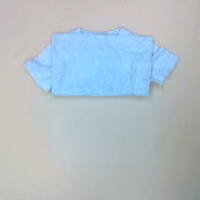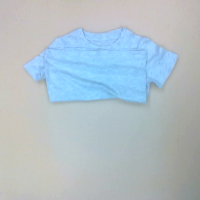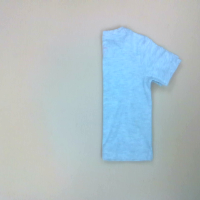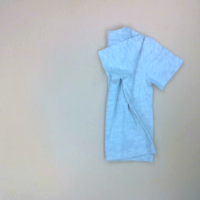SUJAY M B
ROBOTICS
MACHINE LEARNING
EMBODIED AI
let's connect
Reach out to me.
learn more...explore projects
FabricFlowNet
Bimanual Cloth Manipulation with a Flow-based Policy
A method for goal-directed cloth manipulation, a challenging task due to the deformability of cloth. The key insight of this work is that optical flow, a technique normally used for motion estimation in video, can also provide an effective representation for corresponding cloth poses across observation and goal images. We introduce FabricFlowNet (FFN), a cloth manipulation policy that leverages flow as both an input and as an action representation to improve performance. FabricFlowNet also elegantly switches between dual-arm and single-arm actions based on the desired goal. FabricFlowNet significantly outperforms state-of-the-art model-free and model-based cloth manipulation policies. The real-world experiments on a bimanual system demonstrate effective sim-to-real transfer. The method generalizes when trained on a single square cloth to other cloth shapes, such as T-shirts and rectangular cloths.




PLAS
Latent Action Space for Offline Reinforcement Learning

The goal of offline reinforcement learning is to learn a policy from a fixed dataset, without further interactions with the environment. This setting will be an increasingly more important paradigm for real-world applications of reinforcement learning such as robotics, in which data collection is slow and potentially dangerous. Existing off-policy algorithms have limited performance on static datasets due to extrapolation errors from out-of-distribution actions. This leads to the challenge of constraining the policy to select actions within the support of the dataset during training. We propose to simply learn the Policy in the Latent Action Space (PLAS) such that this requirement is naturally satisfied. We evaluate our method on continuous control benchmarks in simulation and a deformable object manipulation task with a physical robot. We demonstrate that our method provides competitive performance consistently across various continuous control tasks and different types of datasets, outperforming existing offline reinforcement learning methods with explicit constraints
Cloth Sliding with Tactile Perception
In previous works, tactile sensing has been mainly used in manipulation to get some information about the material of the object that is being manipulated, in order to, for example, prevent slip and improve the quality of the grasp. Humans can leverage tactile information for other dexterous manipulation tasks like manipulating an object without relying on vision using sliding. Comparing to different modalities of perception, tactile sensing has some advantages over vision. It provides location and geometry information of the cloth portion being grasped, which would be otherwise occluded when relying on vision only. Tactile sensors can provide undisturbed information about the status of the current grasp. Possible applications of learning skills such as sliding are: cloth folding, rope manipulation, etc.
We are using a sawyer equipped with a WSG 32 gripper w/ WSG DSA tactile sensor fingers. The task that we are trying to do is this: One point of the cloth is fixed, the gripper grasps the cloth edge near this point and slides to get to the end of the cloth. The policy is trained on real robot using TD3.
Delivery Robot
Intention Estimation through Statistical, Goal-oriented Human-Robot Dialog
Some robots can interact with humans using natural language, and identify service requests through human-robot dialog. We develop a dialog agent for robots that is able to interpret user commands using a semantic parser, while asking clarification questions using a probabilistic dialog manager. This dialog agent is able to augment its language capabilities by adding new entities and learning new ways of referring to existing entities. We extensively evaluated our dialog system in simulation as well as with human participants through MTurk and real-robot platforms.
Meal Assistance Robot
Robotic arms used for meal assistance can help improve autonomy and quality of life for people with disabilites. However, controlling such a system is often difficult for individuals with upper-body disabilities. We created a meal assistance robot capable of navigating to and from a user’s mouth and a bowl of food through the use of landmarks and facial tracking. The system can be controlled with both facial gestures and speech commands, allowing it to be used by individuals with a wide range of disabilities. We also tested our system with nine participants, with each participant running three trials of eating soup and dry food for both the manual and autonomous system. Our hypothesis was that our autonomous system would be faster, easier to use and generally preferred over manual mode. The data showed that our system was in fact preferred and easier to use; however, only for difficult tasks was it proven to be faster than manual control.
We utilized a Kinova JACO2 robotic arm and Microsoft Kinect camera. We used facial tracking, gesture recognition and speech recognition to give commands to robot making feeding easier for people with upper body mobility issues who cannot easily control the robot otherwise.
UAV-UGV Collaboration
Implemented autonomous UAV landing on UGV platform using vision. Implemented communication and task synchronization between UAV and UGV for collaboration to complete high level task from human input.